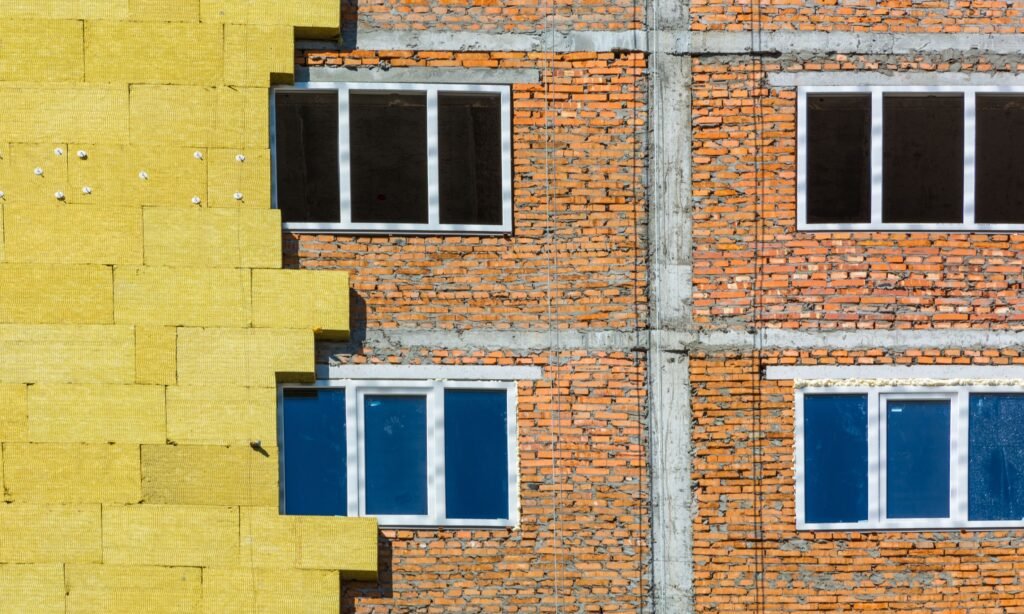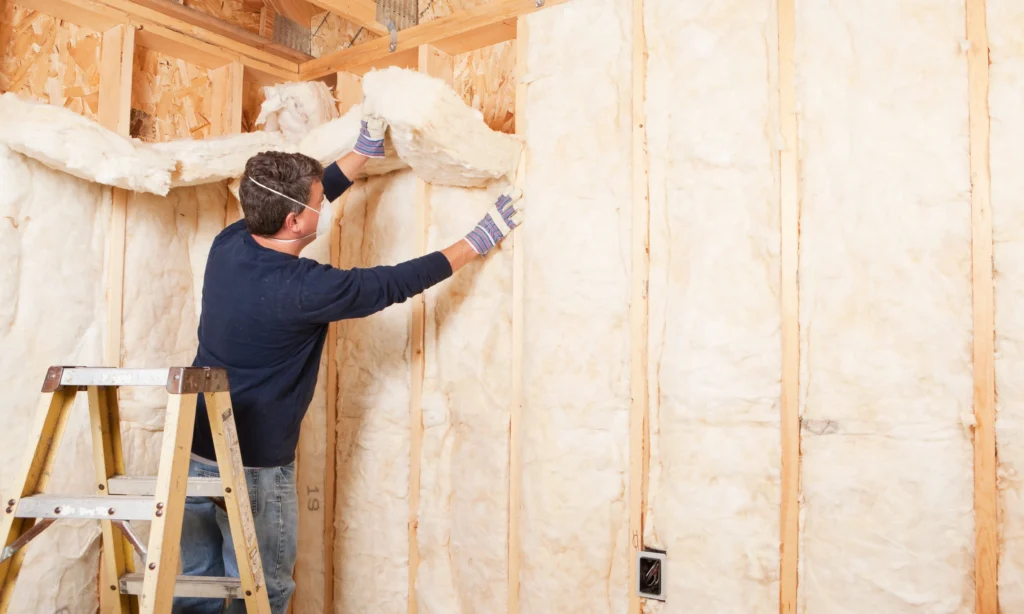Are you stuck between external wall insulation vs internal insulation for your UK home? You’re not alone. This critical decision affects everything from your energy bills to your living space, and getting it wrong could cost you thousands of pounds in wasted investment. With external wall insulation potentially delivering 30% better energy efficiency but costing 60% more upfront, while internal systems offer budget-friendly installation but permanent space loss, the choice isn’t straightforward. This comprehensive comparison reveals exactly which system suits your property, budget, and long-term goals.
When considering external wall insulation vs internal insulation, UK homeowners face one of the most important decisions in their property’s energy efficiency journey. With energy bills continuing to rise and government regulations pushing for better home insulation standards, understanding the differences between these two approaches could save you thousands of pounds and years of regret.
Both external and internal wall insulation can dramatically improve your home’s thermal performance, but they work in fundamentally different ways and suit different circumstances. The wrong choice could cost you valuable living space, create moisture problems, or simply fail to deliver the energy savings you’re expecting.

External Wall Insulation vs Internal Insulation: The Critical Differences That Matter
External wall insulation wraps your entire home in a continuous thermal barrier, while internal insulation adds insulation materials to the inside of your exterior walls. This fundamental difference affects everything from installation disruption to long-term performance, and understanding these implications is crucial for making the right decision for your property.
External wall insulation typically involves fixing insulation boards to your exterior walls, followed by a protective render system that also refreshes your home’s appearance. This approach treats the thermal envelope as a complete system, eliminating virtually all thermal bridging and creating superior energy efficiency. The insulation remains on the warm side of the wall structure, preventing condensation issues and maintaining the thermal mass benefits of your existing walls. Understanding the best materials for external wall insulation is crucial for achieving optimal performance.
Internal wall insulation, conversely, involves adding insulation materials to the interior surface of external walls, usually through rigid foam boards or insulated plasterboard systems. While this approach is often less expensive initially and doesn’t require planning considerations, it comes with significant trade-offs that many homeowners don’t fully appreciate until after installation.
Performance Comparison: The Numbers That Count
When comparing thermal performance, external wall insulation consistently outperforms internal systems. External insulation can achieve U-values as low as 0.15 W/m²K, while internal systems typically struggle to reach below 0.25 W/m²K due to thermal bridging at floor and ceiling junctions. This performance difference translates directly into energy savings, with external systems often delivering 20-30% better efficiency than internal alternatives.
The thermal bridging issue represents perhaps the most significant disadvantage of internal insulation. At every floor level, ceiling junction, and internal wall connection, heat finds an uninsulated path through your wall structure. These thermal bridges not only reduce overall efficiency but can create cold spots that lead to condensation and potential mould growth. External insulation eliminates these thermal bridges entirely, creating a continuous thermal envelope around your property.
Moisture management also favours external systems significantly. With external insulation, your existing walls remain on the warm side of the insulation layer, preventing condensation within the wall structure. Internal insulation can create conditions where moisture condenses within the wall cavity, potentially leading to structural damage and indoor air quality issues over time.

Cost Analysis: Initial Investment vs Long-Term Value
The initial cost difference between external and internal insulation can be substantial, with external systems typically costing 40-60% more than internal alternatives. For an average UK semi-detached house, internal insulation might cost £4,000-£8,000, while external insulation typically ranges from £8,000-£15,000. However, focusing solely on initial costs ignores the complete financial picture.
External insulation delivers superior energy savings that compound over time. The better thermal performance means lower heating bills year after year, while the elimination of thermal bridging prevents the gradual efficiency degradation that affects internal systems. When calculated over a 25-year period, external insulation often proves more cost-effective despite the higher initial investment.
Property value considerations also favour external systems. External insulation typically adds more value to your property than internal alternatives, partly due to the superior energy efficiency but also because it doesn’t reduce internal floor space. Estate agents consistently report that properties with external insulation command higher prices and sell more quickly than those with internal systems. When budgeting for your project, it’s essential to understand external wall insulation costs to make an informed financial decision.
Space and Disruption: The Practical Realities
Internal insulation reduces your living space by 100-150mm on every external wall, which might seem minor but can significantly impact room proportions and usability. In smaller properties, this space loss can be particularly noticeable, affecting furniture placement and making rooms feel cramped. External insulation actually increases your internal space slightly by moving the thermal envelope outward.
Installation disruption represents another crucial consideration. Internal insulation requires extensive internal work, including removing and replacing radiators, electrical fittings, and potentially replastering entire rooms. You’ll likely need to move out of affected rooms during installation, and the process can take several weeks with significant mess and upheaval.
External insulation installation, while visible from outside, allows normal internal use of your home throughout the process. The work is completed from scaffolding, meaning minimal disruption to your daily routine. Most external insulation installations are completed within 1-2 weeks, compared to several weeks for internal systems.

Planning and Regulatory Considerations
External insulation projects must consider planning permission requirements, particularly in conservation areas or for listed buildings. The change to your property’s external appearance might require planning approval, and some areas have restrictions on external insulation systems. However, most external insulation projects fall under permitted development rights and don’t require full planning applications.
Internal insulation rarely requires planning permission but must still comply with building regulations, particularly regarding moisture management and thermal bridging. The building regulations approval process is typically simpler for internal systems, but this doesn’t mean the installation is less complex or problematic.
Both systems require building regulations approval to ensure compliance with current thermal standards. Professional installers should handle this process as part of their service, but it’s worth understanding the requirements before committing to either approach. The quality of installation is particularly crucial for external systems, where proper external wall insulation fixings ensure long-term performance and system integrity.
Making the Right Choice for Your Property
For most UK homeowners, external wall insulation represents the superior long-term investment. The combination of better thermal performance, no space loss, superior moisture management, and higher property value increases typically justify the additional initial cost. External insulation is particularly beneficial for solid wall properties, where the thermal bridging disadvantages of internal systems are most pronounced.
However, internal insulation can be appropriate in specific circumstances. Properties where external insulation isn’t feasible due to planning restrictions, architectural constraints, or access issues might benefit from internal systems. Similarly, homeowners with very limited budgets might choose internal insulation as a compromise solution, though the long-term costs and performance disadvantages should be carefully considered.
When considering either option, working with experienced professionals is crucial for optimal results. For external wall insulation UK projects, proper system selection and installation technique directly impact long-term performance and warranty coverage. Professional installers can assess your specific property requirements and recommend the most suitable approach.
The decision between external and internal wall insulation ultimately depends on your property type, budget, and long-term goals. While external systems typically offer superior performance and value, the right choice depends on your specific circumstances and priorities. Understanding these differences ensures you make an informed decision that delivers the energy savings and comfort improvements you’re seeking.
For homeowners serious about maximizing energy efficiency and property value, external wall insulation typically represents the better investment. The superior thermal performance, elimination of thermal bridging, and preservation of internal space make external systems the preferred choice for most UK properties, despite the higher initial cost.
